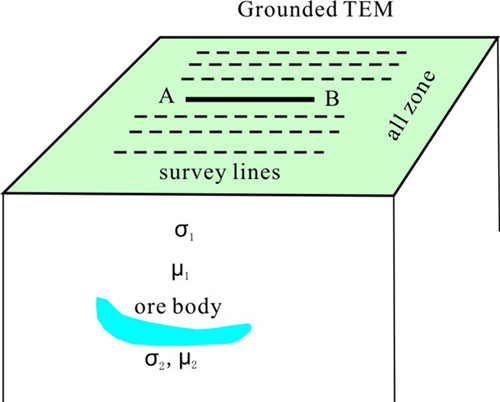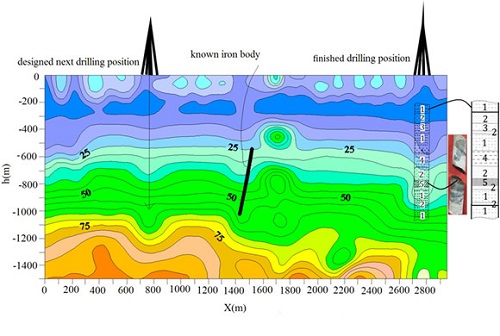Huoqiu iron deposit is a representative Precambrian banded iron formation (BIF) deposit at the southern margin of the North China Craton (NCC). The BIFs are hosted in a mid- to high-grade Neo-Archean metamorphic formation and overlain by thick Quaternary sediments. Previously, a large number of BIFs have been discovered in the Huoqiu County. however, only a few BIFs deposits have been reported in Yingshang County. Geographically, Huoqiu and Yingshang County are separated by the Huaihe River, which suggests that BIF did not occur north of the river. However, the two counties share the same geological features, which is an important indictation that Yingshang County could host iron deposits. Due to unclear metallogenic conditions, it is necessary to carry out deep geophysical detection work.
In order to test the existence of BIFs in Dawang village, Jianying town, Yingshang County, Xue Guoqiang, one researcher of the solid mineral research laboratory, IGGCAS and his postgraduates deployed, for the first time at home and abroad, the short-offset transient electromagnetic method (SOTEM), which is based on the study of long-offset transient electromagnetic method (LOTEM). SOTEM has higher precision and larger detection depth than loop TEM. Three steps are performed to detect BIFs. Firstly, a conceptual geological model constrained by prior knowledge was constructed. Then, the geophysical response from this model was calculated using a 2D Finite-Difference Time-Domain (FDTD) numerical modeling scheme. Finally, SOTEM was applied to detect the BIF deposits in Yingshang County. After interpolation and further processing, three low-resistivity anomalies can be identified at a depth of 500m to 1500m. A test hole was later drilled the Anhui Quanli drilling company and confirmed the existence of a concealed ore body at a depth depth of 600 m.

Fig.1. Set-up of a SOTEM exploration system in 3-D.

Fig.2. Geophysical survey lines and depth-resistivity profile.
(a) Layout of survey lines and (b) data interpretation and drilling test result with legend:
1 — feldspar magmatic granite; 2 — plagioclase amphibolites; 3 — staurolite biotite schist.
4 — pegmatite; 5 — a ribbon cummingtonite magnetic quartzite.
Xue et al. Discovery of a hidden BIF deposit in Anhui province, China by integrated geological and geophysical investigations. Ore Geology Reviews , 2014 , 63: 470-477 (Link)